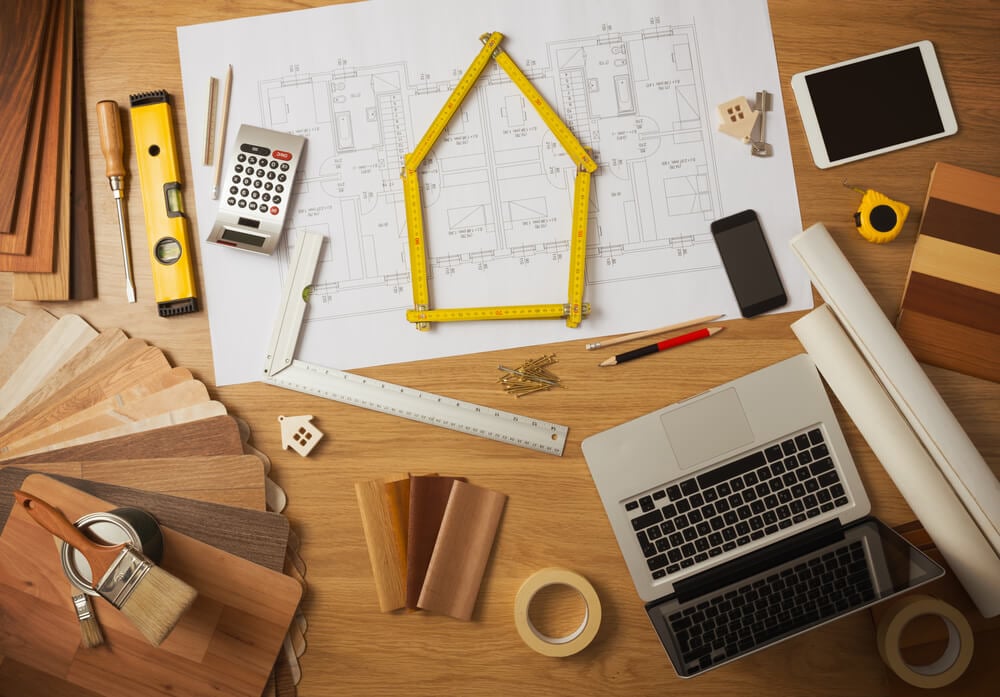
Mastering the Art of Estimating Rehab Costs for Real Estate Investors
Home renovation costs can vary greatly, and no single calculation applies to every situation. Two houses that appear to be the same may have drastically different renovation costs. This is dependent on factors like:
- The project's scope
- The quality of materials and labor
- The level of finish
- The duration of the renovation
Renovation costs vary depending on the region. Labor costs can be significantly higher in markets with high demand and low supply. They can even double or triple the normal rate.
Renovation costs usually fall within a certain range, but they can still vary a lot. Real estate investors and house flippers should take steps to estimate the cost of the renovation before beginning the project. This will help them avoid any unpleasant surprises.
Carefully consider factors such as quality of materials, labor and project duration. This will help investors estimate the cost of renovating a house. This will reduce the chances of any mid-project surprises.
Planning the extent of the renovation
Before you start, it's important to understand the potential costs involved. Generally, the more extensive the renovation, the more expensive it will be. Structural and mechanical changes tend to cost more than cosmetic updates, such as repainting and changing fixtures. Let's take a look at some common renovation projects and their associated costs.
Kitchen renovations
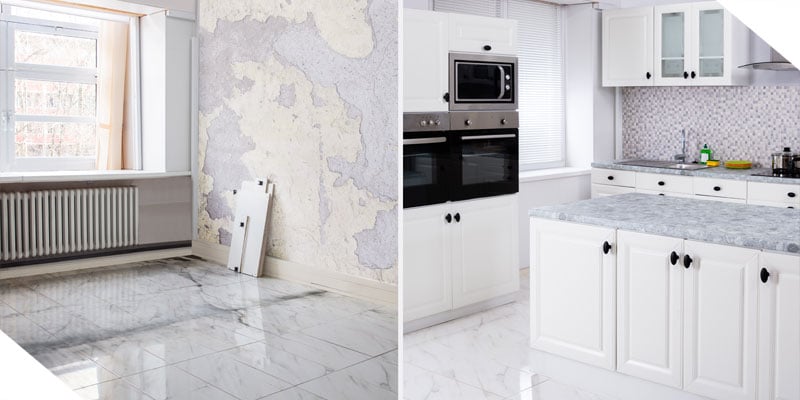
Kitchen renovations can range from minor cosmetic updates to complete overhauls. Costs ranges will depend on whether you plan to do it yourself or hire a contractor.
For example, minor updates, such as fresh paint and new hardware, can cost as little as $500. You'd be surprised what a fresh coat of paint and new hardware can do to spruce up old cabinets!
In contrast, a complete remodel done by a contractor could set you back anywhere from $20K to $120K. Below are some examples of typical cost ranges for kitchen renovations:
- Minor kitchen cosmetic updates: $500 – $20,000
- DIY complete kitchen remodel: $15,000 – $50,000
- Hire a contractor for a complete kitchen remodel: $20,000 – $120,000
Bathroom renovations
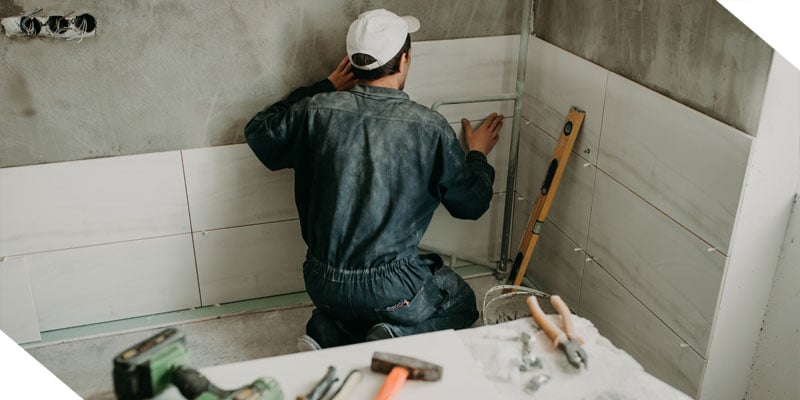
When it comes to bathrooms, the costs can also vary widely. Bathroom updates can be as minor as replacing the vanity or tiling or as major as building a new bathroom addition. If you change the plumbing, expect costs to rise significantly, while cosmetic changes typically cost less.
Below are some examples of typical cost ranges for bathroom renovations:
- Surface/cosmetic bathroom update: $1,000 – $15,000
- Complete remodel of bathroom: $4,500 – $50,000
- New bathroom home addition: $45,000 – $85,000
Painting
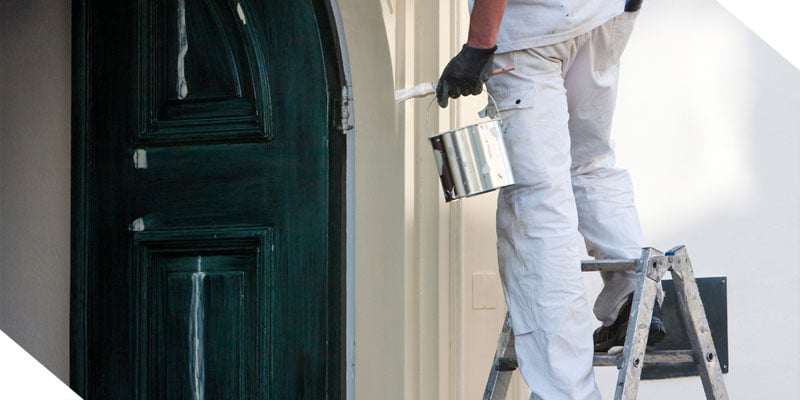
Painting is one of the easiest and most affordable ways to give your property a fresh look. Costs will depend on the job size, with smaller jobs costing more per square foot.
Suppose you know the property's square footage. Estimating the cost of painting the interior is simple. It typically costs between $2 and $6 per square foot, including labor and materials.
Exterior painting is also often charged by the square footage. The more surface area on your property that needs painting, the more expensive the bill. A professional exterior painting service will cost between $1.50 and $4 per square foot.
Flooring
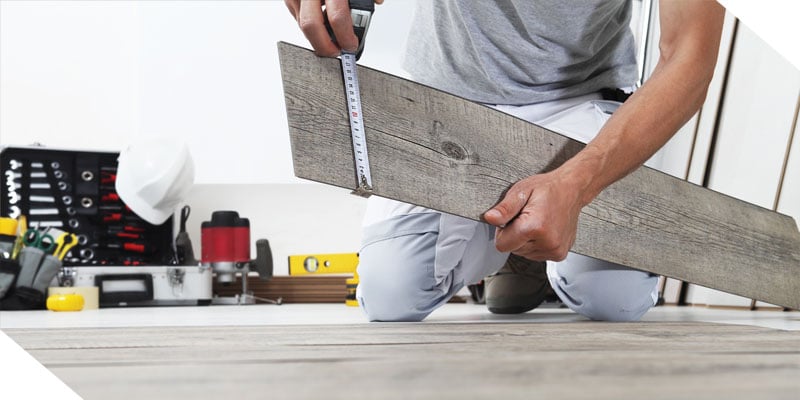
Flooring is essential to any investment property, adding aesthetic appeal and functional value. The cost of flooring a property varies. It depends on the type of flooring material, the area to be covered, and the installation fees.
The most popular flooring options for investment properties include carpet, vinyl, laminate, and hardwood. Carpet is the most affordable option, with costs ranging from $2 to $5 per square foot, including installation. Vinyl flooring typically ranges from $3 to $7 per square foot. It is a practical choice for rental properties due to its durability and water resistance.
Laminate flooring is also affordable, costing between $4 to $8 per square foot, including installation. It mimics the look of hardwood floors without the high price tag and requires less maintenance.
Hardwood floors are the most expensive option, costing between $8 to $15 per square foot, including installation. However, they add significant value to the property and are popular for high-end rental properties.
Make sure to factor in installation costs when budgeting for flooring. Installation fees will vary depending on the flooring material type and the installation process's complexity. Hiring a professional installer is recommended for a seamless and long-lasting finish.
Roofing
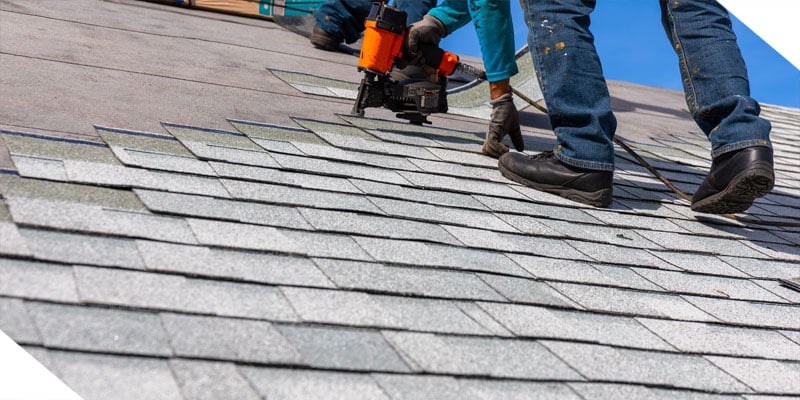
Roofing is one of the most critical components of any investment property. A well-maintained roof protects the property from the elements and adds value to the building. The cost of roofing a property depends on several factors. These include the size of the roof, the material used, and the complexity of the installation process.
The most common roofing materials include asphalt shingles, metal, and tile. Asphalt shingles are the most affordable option, with costs ranging from $3 to $5 per square foot, including installation. They are easy to install and come in various colors and styles to suit any property.
Metal roofing is a popular choice for investment properties because it is durable, fire-resistant, and low maintenance. The cost of a metal roof varies, as it depends on the type of metal. Generally, it costs between $7 and $12 per square foot, including installation.
Tile roofing is a high-end option that adds significant value to the property. It is durable and long-lasting, with costs ranging from $10 to $20 per square foot, including installation. However, tile roofing is heavy, and the installation process can be complicated and time-consuming, requiring professional expertise.
A poorly installed roof can lead to leaks, water damage, and even structural issues. Hiring a licensed roofing contractor is essential to ensure the installation process is done correctly. The cost of hiring a professional roofing contractor will depend on the roof size and the installation process's complexity. However, it is an investment worth making to protect and add value to the property.
Finishing the basement
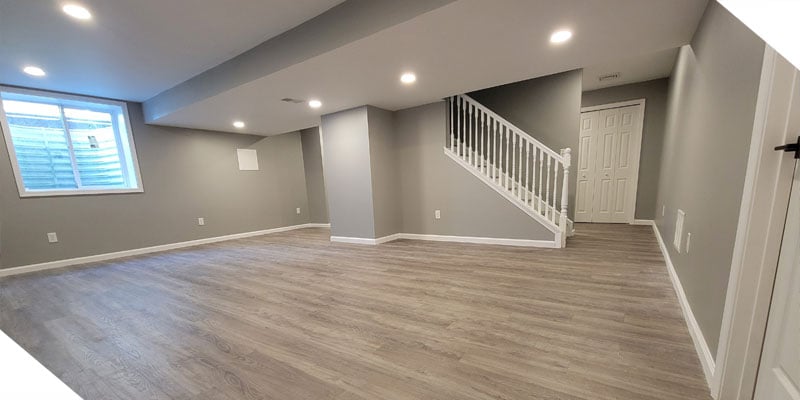
Adding extra living space and increasing the value of an investment property can be achieved by finishing its basement. The cost of finishing a basement varies. Factors include the size of the basement, the type of materials used, and the complexity of the project.
The first step in finishing a basement is to ensure the space is dry and moisture-free. This may involve waterproofing and addressing any issues with the foundation.
The space must be dry before proceeding. Walls can then be framed. Insulation can also be installed to keep the space warm and energy-efficient.
The type of finishing materials used will depend on the intended use of the space. Drywall is the most common material used for walls, with costs ranging from $1.50 to $3 per square foot, including installation. Flooring options include carpet, laminate, or tile, with costs ranging from $3 to $7 per square foot, including installation.
If the basement is to be used as a living space, lighting and electrical work will need to be installed. The cost of finishing the basement can vary from $500 to $2,500. It depends on the space's size and the installation's complexity. This cost will be added to the overall cost.
Hiring a contractor to finish the basement is recommended, as the project can be complex and time-consuming. The cost of hiring a contractor will depend on the space size and the project scope. However, finishing the basement can add significant value to the property and provide a return on investment over time.
Below are some examples of typical cost ranges for finishing a basement:
- Hire a contractor to finish a basement from scratch: $50,000 – $100,000
- DIY finish the basement from scratch: $15,000 – $25,000
- Hire a contractor to install a pre-fabricated basement finishing system: $50,000 -$75,000
Home additions
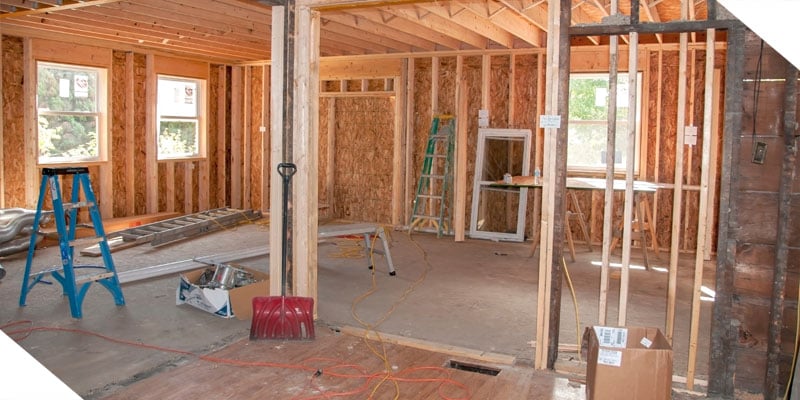
Home additions are among the most expensive renovations possible. They add living space and value but sometimes cost more than they return in higher home values.
If you want an addition, consider enclosed porches and sunrooms first. They typically don't require ductwork, plumbing, or much in the way of wiring changes. Below are some examples of typical cost ranges for home additions:
- Enclose a porch: $7,000 – $15,000
- Add a sunroom: $15,000 – $23,000 for a pre-fabricated sunroom, not including installation.
- Multiroom home addition: $150,000 – $500,000
Labor and permits
Undertaking a home renovation project requires labor costs from contractors. This expense can be avoided if you opt to do the project yourself. Hiring and overseeing specialist contractors directly can reduce labor and renovation costs. This is an alternative to hiring a general contractor who will hire and oversee specialists for you.
Renovating a bathroom requires different types of professionals. A plumber is needed for plumbing work. An experienced handyman can install new tile flooring and shower tiles. You could even take on some of the easier tasks yourself, such as replacing a faucet or cabinet.
However, many real estate investors find working with contractors during rehab projects challenging. Conducting proper research on prospective contractors is essential before starting any renovation project. Plan to deal with a bad contractor if things go awry.
It's also important to remember that for many remodeling projects, you'll need a permit. You can obtain permits yourself, or your contractors can obtain them for you. Regarding projects that require permits, you'll need to use licensed contractors, so it's essential to plan accordingly.
Soft costs
Planning a house renovation project requires careful consideration. The costs of materials and labor must be taken into account. Additionally, the project will incur soft costs.
Soft costs are expenses that do not include labor or materials. Examples of soft costs include closing costs when buying and selling a property, loan interest, permit fees, and utilities.
It is essential to remember that soft costs can accumulate rapidly. This can affect your profit margin. Therefore, accurately forecasting the duration of your renovation project is essential.
Every month of the project leads to carrying costs. These include interest on a hard money loan, utility bills from gas and electric companies, and water bills from the municipality.
Completing your renovation project as quickly as possible can help reduce the impact of soft costs on your profit margin. Doing so will minimize the amount of money spent on carrying costs and increase your chances of achieving a profitable outcome.
House renovations & ROI
It's essential to understand that not all renovations are equally profitable. Real estate investing requires strategy. Identifying the right renovations is key to maximizing return on investment (ROI).
To determine the after-repair value (ARV) and renovation costs accurately, review comps. Consult with your realtor and possibly another investor. For instance, suppose upgrading the kitchen costs you $10,000 but raises the property's value by $20,000. In that case, it's a wise investment decision.
One helpful guideline to avoid overpaying for a property is the 70% rule. This rule suggests not paying more than 70% of a property's ARV minus renovation costs. Adhering to this rule will reduce the risk of buying a property you can't sell for a profit.
Assessing the property's needs is essential before deciding which renovations to make. This is especially true for classic homes, as the updates can have a high return on investment for investors.
For example, mold is a common issue that affects property. It must be addressed before any other renovations can be done. This can significantly influence the overall cost of the renovations.
One often-overlooked house renovation
It's essential to consider the visible upgrades and the necessary but less obvious ones to increase your ROI effectively. Investors often overlook foundation issues. However, these issues can be costly to repair. Additionally, they can create problems during the selling process.
It is crucial to inspect potential properties for foundation problems. This will help to avoid any issues. Furthermore, bringing in several experts to provide accurate quotes is important.
Negotiations can be used to emphasize the severity of the foundation problem. This could result in investors getting a good deal from sellers who are keen to let go of the property.
It is essential to ask foundation experts if the repairs may cause any further issues with the flooring of the property. This should be considered when calculating the total cost of the renovation. While foundation issues may not be the most exciting renovation, addressing them can significantly increase your profits on a house flip.
Other factors affecting home renovation costs
Every house renovation is different. Several factors are needed to determine the cost of renovating a house. These include:
- Size and age of the house: Larger and older homes typically have higher renovation costs. Every component in a home has a limited lifespan. When these "bones" need to be replaced, the cost can be high.
- Location: Location affects labor and material costs. Labor costs vary according to the local labor pool's depth. Material costs may be higher in remote areas or expensive cities. Sales tax also varies by state.
- Permits: Local municipalities charge permit fees ranging from $100 to $3,000 depending on the jurisdiction and the number of permits needed. If you delegate the permits to your contractor, be prepared to pay extra. For any work requiring permits, you must use a licensed contractor, who charges more than unlicensed contractors. Inspectors may also demand extra work, so leave wiggle room when forecasting renovation costs.
How to save money on home renovation costs
There's plenty of room to save money when you set out to renovate a house. But remember that your eventual sales price may suffer if you cut corners. Here are some tips to save money on home renovation costs:
- Hire reputable, verifiable contractors for large renovation projects to avoid redoing bad work.
- Use quality materials, particularly for visible finishes, but look for ways to reuse existing materials.
- Consider doing some renovation work yourself, starting small and building proficiency over time.
- Avoid changing the footprint of the house or room to minimize costs.
Estimating rehab costs for a specific property
So, how much does it cost to renovate a house? Here are some ways to estimate renovation costs for a property:
- Home Advisor's True Cost Guide: This tool checks labor rates in your area and connects you with well-reviewed professionals. Get several quotes before hiring a contractor.
- CostHelper: This resource shows typical costs for similar projects in your area.
- Mobile apps: Many mobile apps help estimate rehab costs, such as Kukun and Handyman Calculator. Handyman Calculator is a free app that helps estimate costs, track expenses, estimate materials, and manage projects. Kukun offers information about a project's projected return on investment (ROI) in your area. They can also connect you to reliable and highly-recommended local contractors.
Financing home renovation costs
When financing a home renovation, it's important to understand that conventional lenders typically don't finance investment property renovations. Instead, most real estate investors turn to hard money loans to fund purchasing and renovating properties needing remodeling. Upon completion, you can sell the property as a flip or refinance it to keep it as a long-term rental.
Other financing options are available such as fix and flip loans, bridge loans, and DSCR rental loans. Fix and flip loans and bridge loans are short-term loans that can cover a property's purchase and renovation costs. For example, for real estate investors, Kiavi provides 100% financing of house renovation costs.
DSCR rental loans are structured differently than other loans. Rather than basing the loan amount on the borrower's income or credit score, it is based on the property's cash flow.
Real estate investors often use DSCR loans to finance rental properties. These properties have stable and predictable cash flows. Investors may use these loans to acquire or refinance the property over a long-term period.
Other options beyond hard money loans include:
- Paying cash.
- Borrowing on lines of credit.
- Borrowing money privately from friends and family.
Getting pre-approved before making an offer is essential for a successful home renovation. This will streamline the approval process and help you settle quickly. No matter where you plan to borrow the funding, pre-approval is key.
Final word
Estimating rehab costs can be challenging, requiring experience, research, and a keen eye for detail. Always get multiple quotes and negotiate pricing to get a sense of the pricing range for a particular project.
It's essential to evaluate potential contractors carefully. You must verify they are reliable and can complete the renovation within budget and on time. This is essential for a successful real estate flip.